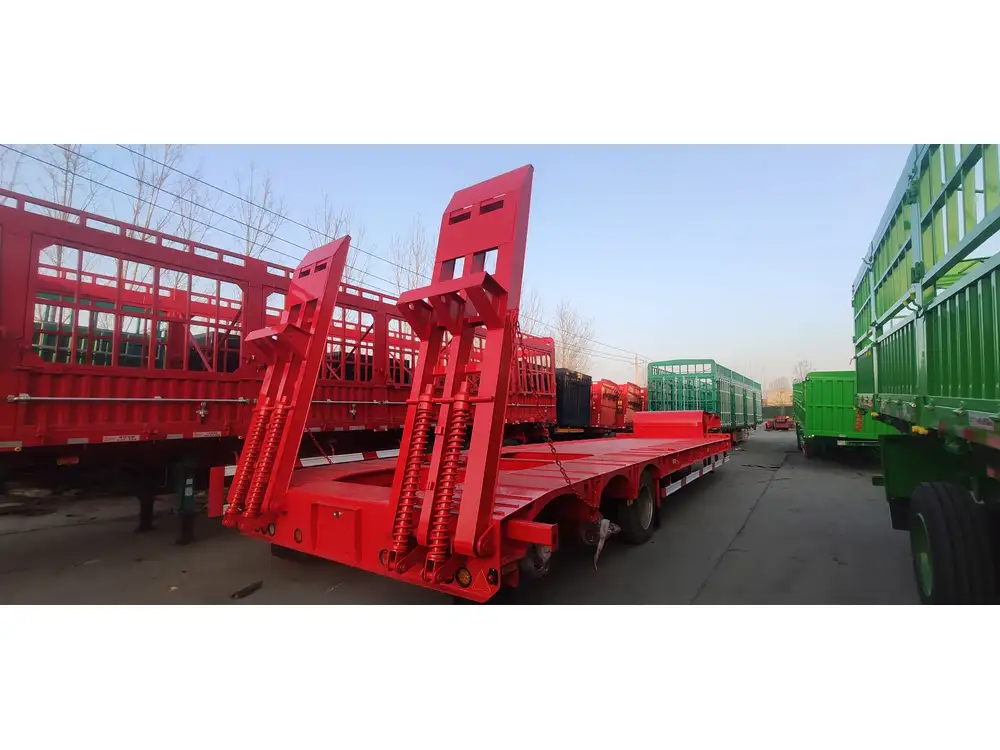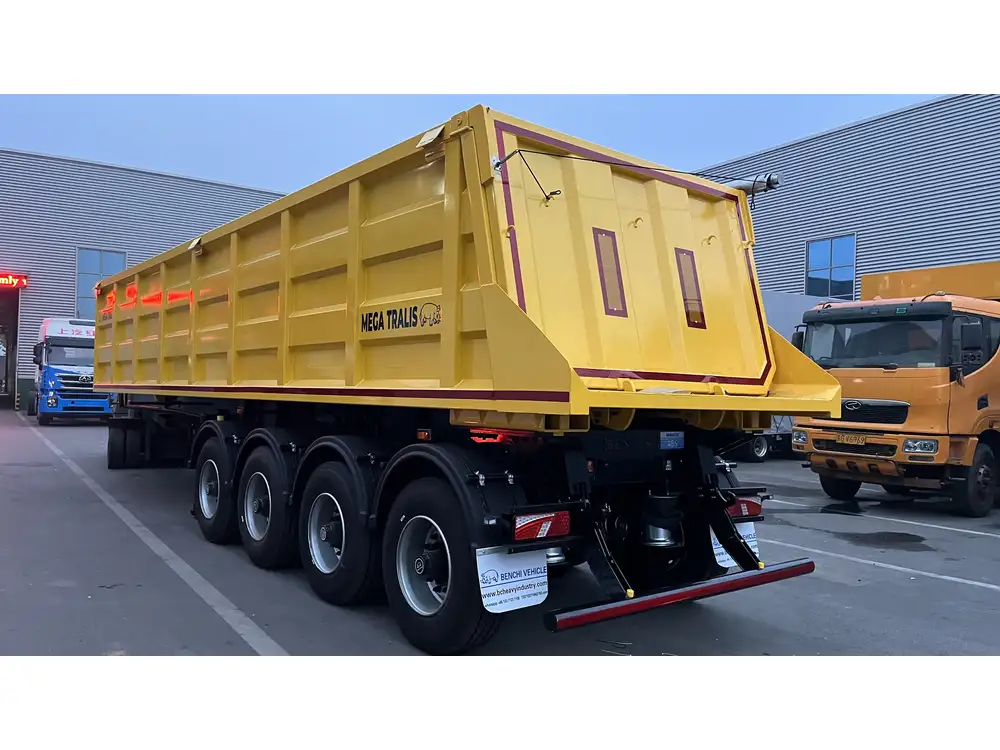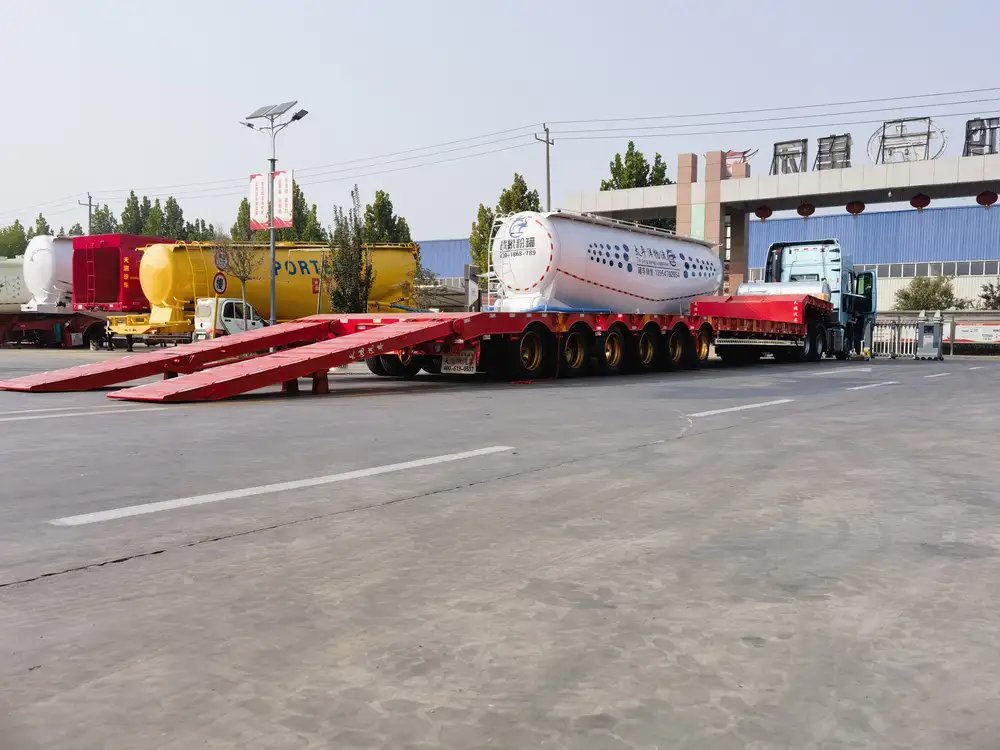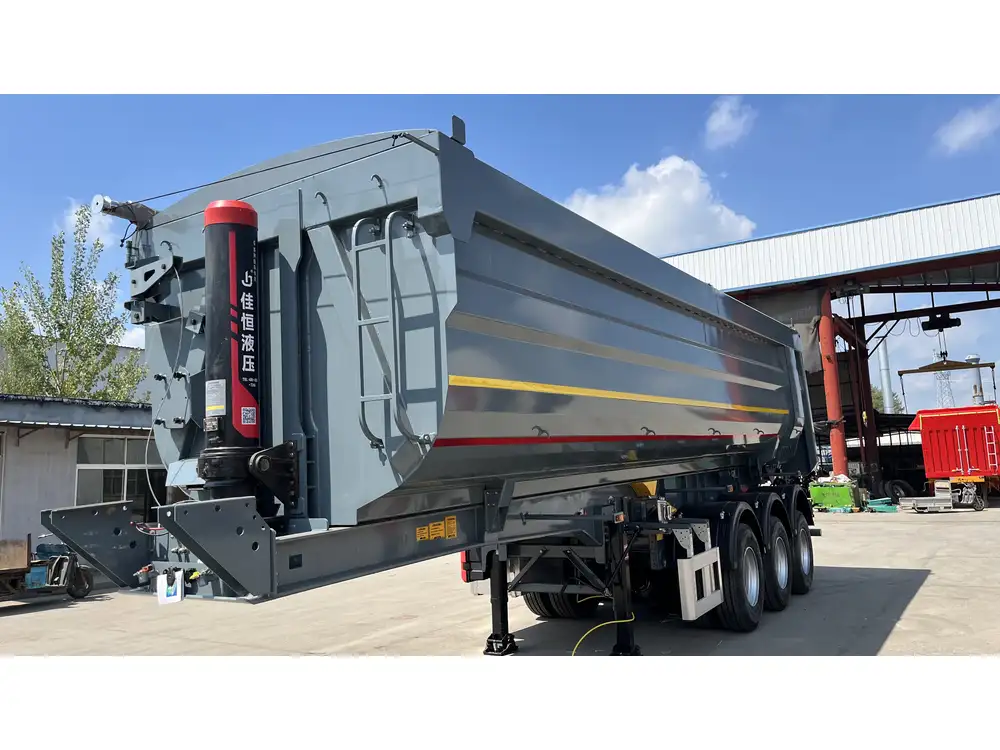Determining how many yards of material a dump trailer can accommodate is crucial for efficiency in construction, landscaping, and waste management projects. The answer can guide project planning, budgeting, and operational efficiency. In this comprehensive guide, we will explore various factors that influence dump trailer capacity, discuss materials and weight considerations, and highlight practical uses of dump trailers across different industries.
Key Definitions and Measurements
What is a Dump Trailer?
A dump trailer is a specialized vehicle used for transporting loose materials, such as dirt, gravel, or demolition debris. Characterized by its hydraulic lift mechanism, it allows for easy unloading of contents, hence enhancing productivity across various fields, from agriculture to construction.

Understanding Yards as a Measurement
In construction, a “yard” refers to a cubic yard, a standard unit of volume that measures 3 feet by 3 feet by 3 feet (27 cubic feet). Understanding how to convert this measurement is essential when dealing with dump trailers.
Common Dump Trailer Sizes
Dump trailers come in various sizes, the typical capacities being between 5 to 20 cubic yards. Table 1 provides an overview of common dump trailer sizes and their corresponding capacities.
| Dump Trailer Size | Capacity (Cubic Yards) | Approximate Weight Limit |
|---|---|---|
| 5 ft | 5 | 4,000 lbs |
| 10 ft | 10 | 8,000 lbs |
| 12 ft | 12 | 12,000 lbs |
| 14 ft | 14 | 14,000 lbs |
| 20 ft | 20 | 15,000 lbs |
Factors That Determine Dump Trailer Capacity
Understanding the limiting factors at play in dump trailer capacity is essential for optimizing usage. The following elements significantly impact how many cubic yards of material can be effectively loaded:

1. Trailer Specifications
Each dump trailer has specific dimensions that define its capacity. The height, length, width, and even the material composition of the trailer will dictate how much material it can hold.
2. Material Density
Material density plays a critical role in determining load weight, thereby impacting the capacity of the trailer. Below is an overview of common materials and their densities:
| Material Type | Density (lbs/cubic yard) |
|---|---|
| Dirt | 1,200 – 1,800 |
| Gravel | 1,400 – 2,400 |
| Sand | 1,500 – 2,000 |
| Concrete | 3,000 – 3,200 |
| Asphalt | 2,400 – 2,800 |
Understanding density is crucial because while a trailer might theoretically fit 10 cubic yards of sand, the actual weight could exceed allowable limits based on the type of material.
3. Weight Limits
Dump trailers also come with weight limits mandated by the manufacturer and local regulations. Exceeding these limits can lead to geometric distortion, tire blowouts, and even accidents. Hence, calculating exact weights based on material type, load distribution, and trailer specifications is vital.

Estimating the Number of Yards of Material
With the fundamentals in mind, calculating the number of yards for specific materials can help plan jobs more effectively.
Step-by-Step Calculation
- Identify Material Density: Using the material type, find the average density (in pounds per cubic yard).
- Know the Weight Limit: Refer to the trailer’s specifications to determine its maximum weight capacity.
Calculate Load Capacity: Use the formula below to find the maximum cubic yards of a specific material:
[ \text{Cubic Yards} = \frac{\text{Weight Limit}}{\text{Material Density}} ]
Example Calculation
Suppose you have a 10 ft dump trailer with a weight limit of 8,000 lbs destined for hauling dirt (density of approximately 1,500 lbs/cubic yard).
[ \text{Cubic Yards} = \frac{8000 \text{ lbs}}{1500 \text{ lbs/cubic yard}} \approx 5.33 \text{ cubic yards} ]Thus, you can load approximately 5.33 cubic yards of dirt into this dump trailer without exceeding the weight limit.

Practical Applications of Dump Trailers
Dump trailers serve multiple industries, facilitating various tasks. Below are some practical uses that highlight the versatility of these vehicles:
1. Construction and Renovation
In the construction sector, dump trailers transport materials like sand, gravel, concrete, and debris. They are invaluable for:
- Delivering raw materials to job sites.
- Removing waste and excess material.
- Disposing of hazardous materials under regulated conditions.
2. Landscaping
In landscaping projects, dump trailers assist in:
- Transporting topsoil and mulch.
- Removing unwanted debris and dead plants.
- Relocating heavy materials without straining manpower.

3. Agriculture
Farmers utilize dump trailers for:
- Moving bulk grain during harvests.
- Transporting fertilizers, compost, and other amendments.
- Collecting and clearing waste generated during farming operations.
4. Municipal Services
Several municipalities employ dump trailers for:
- Street clean-up.
- Managing seasonal debris such as leaves or branches.
- Transporting construction debris from roadwork and maintenance.
Considerations When Choosing a Dump Trailer
Choosing the right dump trailer requires weighing several considerations to ensure optimal efficiency. Below are key aspects to consider:

Size and Capacity
When deciding on a dump trailer, consider your specific needs and the types of materials you’ll handle. A larger trailer increases capacity but may be more challenging to maneuver in urban settings.
Material Type and Density
Determine your typical loads and how they correspond to the densities discussed earlier. This will help you choose a trailer best suited for your needs.
Hydraulic Features
Many modern dump trailers come equipped with advanced hydraulic mechanisms. Assess whether these features provide added efficiency for you, particularly for heavy loads.

Legal Compliance
Different regions have regulations regarding weight standards and trailer specifications. Familiarize yourself with the laws in your area to ensure compliance and safety.
Maintenance Tips for Dump Trailers
To prolong the lifespan and functionality of dump trailers, regular maintenance is critical. Consider the following care tips:
1. Check Tire Pressure Regularly
Regularly examining tire pressure helps maintain towing efficiency and safety. Insufficient tire pressure can lead to increased wear and unsafe maneuvers.

2. Inspect Hydraulic Systems
Occasionally inspect hydraulic systems for any signs of leakage or wear. Timely maintenance can prevent bigger issues in the long run.
3. Clean After Use
Post-use cleaning can prevent corrosive materials from damaging the trailer’s body and mechanisms. Regular washing also helps you catch potential issues early.
4. Lubricate Moving Parts
Ensure that all moving parts, like hinges and lift mechanisms, are suitably lubricated. Proper lubrication minimizes friction and wear, enhancing the trailer’s lifespan.

Conclusion
Understanding how many yards of material can fit in a dump trailer is fundamental for optimizing your project efficiency, workload management, and cost-effective practices. By considering factors like trailer specifications, material densities, and weight limits, organizations can streamline operations significantly. Moreover, an awareness of practical applications and maintenance best practices assists in getting the most out of a dump trailer, ensuring optimal performance over time. Whether in construction, landscaping, or municipal services, dump trailers stand as a quintessential tool in effectively managing material transportation. Proper maintenance, combined with informed calculations, ensures that they serve their purpose efficiently, making them indispensable in the modern work environment.



